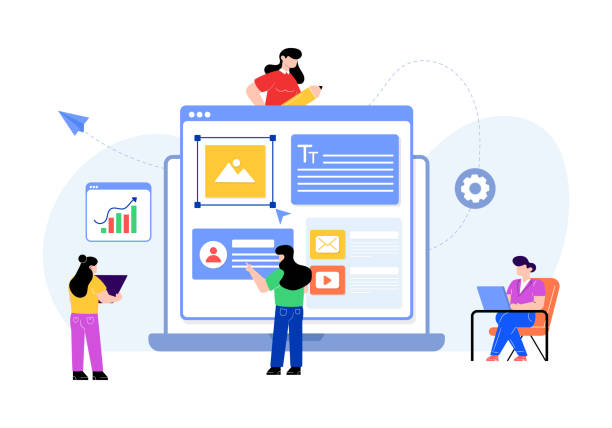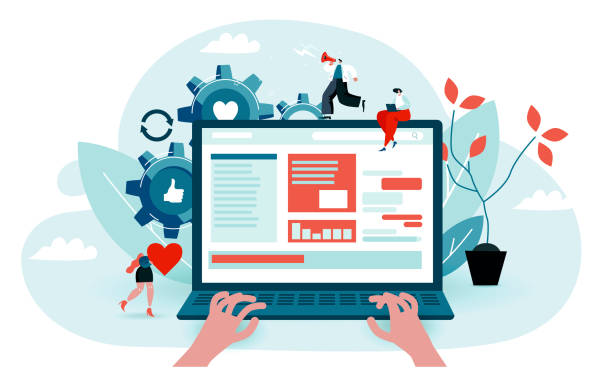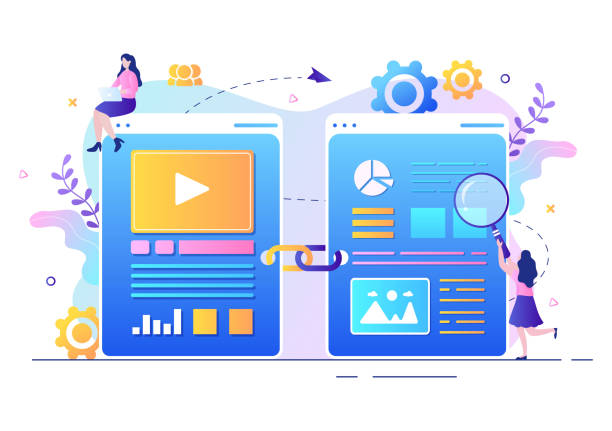Why is Custom Website Design a Necessity?
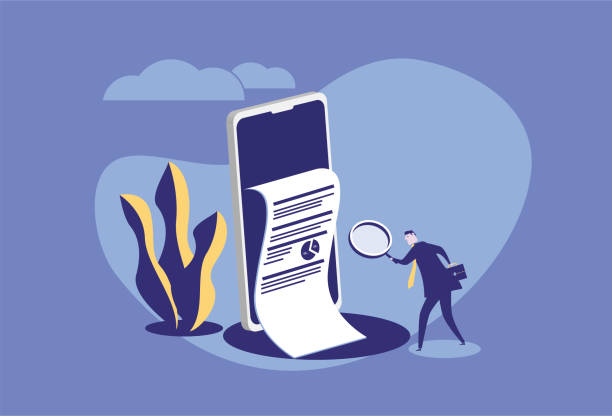
In today’s digital world, having a powerful online presence is vital for every business.
But is merely having a website enough? The answer is no.
Many businesses seek to enter the web space using ready-made templates or general platforms, but custom website design can completely change the game.
This approach allows you to have a site that perfectly matches your unique needs, branding, and business goals.
This not only helps create an unparalleled #user_experience but also lays the groundwork for sustainable growth and development.
A customized site not only reflects your visual identity but also offers technical capabilities and features not found in general platforms.
For example, if your business requires complex customer relationship management (CRM) systems or custom user portals, custom website design is the ideal solution.
This type of design gives you complete control over the site’s structure, security, and scalability, which is crucial for long-term planning and preventing future limitations.
Have you ever wondered how a site could be built precisely to your specific needs? This is the strength of custom web design that makes it worth the investment.
Does your current website inspire the confidence that potential customers should have in your business? If the answer is no, it’s time to get your professional and impactful corporate website with Rasavveb.
✅ Fully custom design tailored to your brand identity
✅ Increased lead generation and business credibility in the eyes of customers⚡ Contact us for a free consultation!
The Difference Between Custom Website Design and Ready-Made Templates
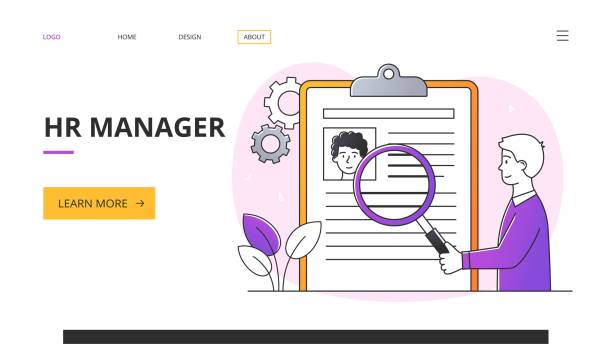
One of the common questions among businesses is whether they should opt for ready-made templates or take the path of custom website design? There are many fundamental differences between these two approaches that can profoundly impact the digital future of your business.
Ready-made templates, as their name suggests, are pre-built designs with limited customization options.
These templates are usually suitable for quick launches with a low budget, but in the long run, you may face serious limitations.
On the other hand, custom website design means creating a website from scratch, paying attention to all the details and your specific needs.
This process offers infinite flexibility in visual design, user experience, and technical capabilities.
While templates may have issues with SEO optimization or loading speed, a custom site is designed from the ground up for optimal performance.
Also, technical and security support in custom sites is usually stronger and tailored to your needs, whereas in templates, this support is often generic and limited.
This choice will directly impact not only the appearance of your site but also its technical capabilities, security, and your ability to compete in the digital market.
Ultimately, custom website design is an investment in a unique and powerful digital platform that can best reflect your brand identity.
Key Stages in the Custom Website Design Process
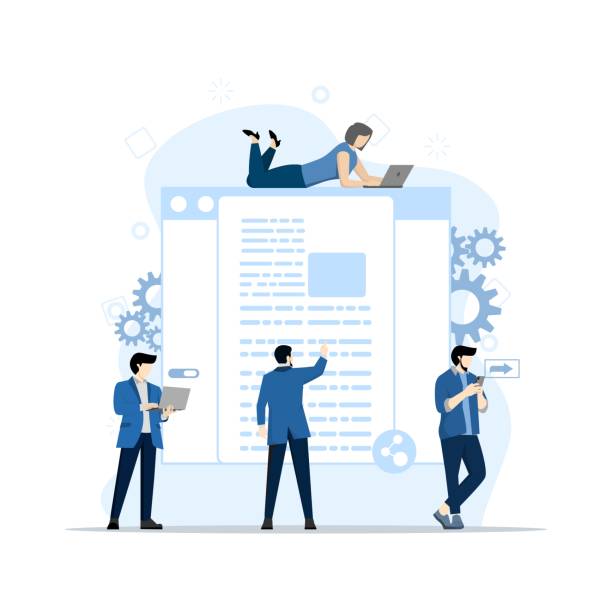
The custom website design process is a step-by-step and precise journey that requires close collaboration between the client and the development team.
These stages include research and analysis, planning, user interface (UI) and user experience (UX) design, technical development, testing, and finally launch and support.
Initially, the design team accurately identifies your business’s needs, goals, and target audience through meetings.
This stage is the cornerstone of a successful custom website design.
Then, based on the collected information, roadmaps and wireframes are prepared for the overall site structure and content layout.
After the structure is approved, it’s time for visual design, which includes graphic design, color scheme selection, fonts, and images to best display your brand’s visual identity.
In the development phase, front-end and back-end coding is performed, and all desired features and functionalities are implemented.
After that, the site undergoes comprehensive functional, security, and compatibility tests to ensure its flawless operation.
This structured approach ensures that the custom website design project proceeds optimally and delivers the expected results.
Below is a table of the main stages and their descriptions:
| Stage | Description |
|---|---|
| Analysis and Planning | Identifying needs, goals, audience, and preparing the project roadmap. |
| UI/UX Design | Preparing wireframes, mockups, and graphic design of user interface and user experience. |
| Development and Coding | Implementing front-end and back-end code and database connection. |
| Testing and Debugging | Functional, security, compatibility tests, and bug fixing. |
| Launch and Support | Uploading the site to the server and providing post-launch support. |
The Role of User Experience (UX) and User Interface (UI) in Custom Website Design
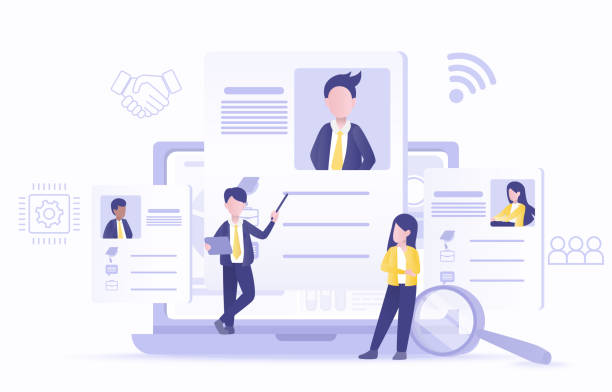
User Experience (UX) and User Interface (UI) are two vital elements in custom website design that are directly related to the success and interaction of users with your website.
UI (User Interface) refers to the appearance and visual elements of the site; everything the user sees and interacts with, from buttons and menus to images and page layouts.
A beautiful and professional user interface can be the first step to attract visitors.
But UX (User Experience) goes beyond aesthetic appeal; this concept refers to the user’s overall feeling when using the site, ease of navigation, efficiency, and satisfaction with interacting with the website.
A strong UX means that the user can easily find what they are looking for, processes are completed without complexity, and the overall experience is enjoyable.
In custom website design, the design team spends a lot of time researching and planning to improve these two aspects.
They analyze user behavior, build customer journeys, and design wireframes to ensure that every part of the site performs optimally.
The ultimate goal is to not only have an attractive-looking site but also one that encourages users to return and perform desired actions (such as purchasing or signing up).
The importance of UX and UI in converting visitors into loyal customers is undeniable, and special attention is paid to it in a custom website design project.
Does your current corporate website not reflect your brand’s credibility and power as it should? Rasavveb solves this challenge for you with professional corporate website design.
✅ Increased visitor credibility and trust
✅ Targeted attraction of more customers
⚡ Click for a free consultation!
SEO Optimization in Custom Website Design
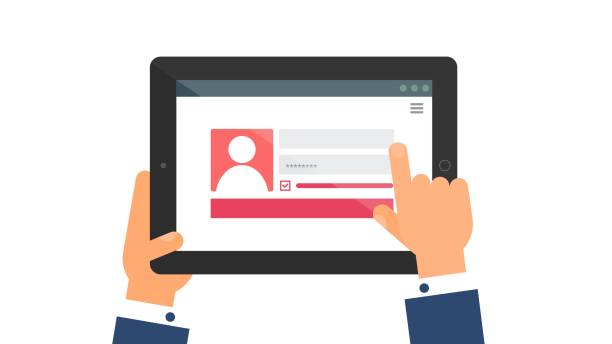
SEO optimization should be considered from the very beginning of the custom website design process.
SEO no longer just means keyword stuffing; it includes a set of techniques and strategies aimed at improving your website’s ranking in search engine results like Google.
In a custom site, you have complete control over the code structure, loading speed, and content optimization, which allows for the best SEO performance.
This includes optimizing title tags, meta descriptions, friendly URL structures, and creating high-quality, relevant content.
Also, technical SEO such as image optimization, caching, and ensuring the site’s responsiveness for various devices (mobile, tablet) is of high importance.
A custom site allows for precise and custom implementation of Schema Markup (structured data), which helps search engines better understand your content.
This proactive approach in custom web design gives you a significant advantage in competing with general websites and leads to more organic traffic being directed to your site.
Investing in custom website design with an SEO-centric approach will, in the long run, lead to reduced marketing costs and increased conversion rates.
Security and Scalability in Custom Website Design
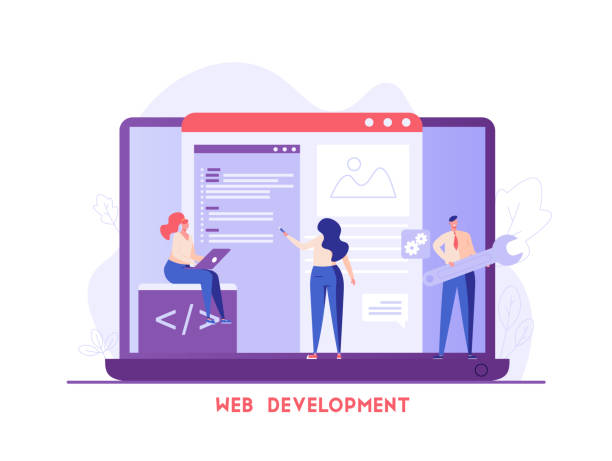
One of the most important aspects of custom website design that is often overlooked is security and scalability.
In a world where cyberattacks are becoming increasingly complex, the security of your website is of paramount importance.
In a custom website design project, the development team can implement best security practices from the outset; from using secure HTTPS protocols and SSL certificates to data encryption, protection against SQL injection and XSS attacks, and implementing powerful firewalls.
This level of security control and customization is rarely achievable in general platforms or ready-made templates.
In addition to security, scalability is also a crucial factor for the growth of any business.
A site must be able to maintain smooth and flawless performance even with an increasing number of users and traffic volume.
Custom website design allows you to provide the necessary infrastructure for scalability from the beginning; this includes selecting appropriate servers, optimizing the database, and a system architecture that has the capacity for expansion.
If in the future you need to add new features or integrate with other systems, a custom site gives you this flexibility.
This ensures that your website will be able to meet the evolving needs of your business not only today but also in the years to come.
Investing in custom website design in terms of security and scalability is, in fact, an investment in the stability and future of your business.
Choosing Appropriate Technologies for Custom Website Design
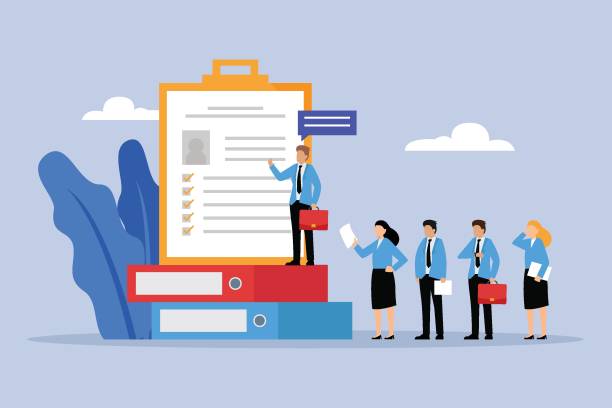
One of the key decisions in the custom website design process is choosing appropriate technologies.
This choice directly impacts your website’s performance, security, scalability, and even maintenance costs.
Depending on the type of website and your business’s specific needs, the development team may use various programming languages, frameworks, and databases.
For the front-end (what users see and interact with), technologies like HTML, CSS, JavaScript, and frameworks such as React, Angular, or Vue.js are very popular.
These technologies enable the creation of dynamic and interactive user interfaces.
For the back-end (the logic and functionality behind the scenes of the website), options include Python (with frameworks like Django or Flask), PHP (with Laravel or Symfony), Node.js (with Express) and Ruby on Rails.
The choice of back-end technology depends on the need for speed, security, and the type of database.
Regarding databases, MySQL, PostgreSQL (for relational data), or MongoDB (for NoSQL data) are commonly used.
Deciding on these technologies requires specialized knowledge and detailed analysis of the custom website design project’s needs.
A correct choice can ensure optimized performance, easier development of new features, and reduced long-term costs.
Below is a table of some of the commonly used technologies in custom website design:
| Category | Technologies (Example) | Application |
|---|---|---|
| Front-end | HTML, CSS, JavaScript, React, Angular, Vue.js | Designing and developing user interface and user experience (what the user sees). |
| Back-end | Python (Django/Flask), PHP (Laravel), Node.js (Express), Ruby on Rails | Server-side logic, database management, and core site functionality. |
| Database | MySQL, PostgreSQL, MongoDB | Storing and managing site information. |
| Content Management System (CMS) | Custom CMS (instead of WordPress, Joomla) | Easy content management and custom functionalities. |
Costs and Investment in Custom Website Design
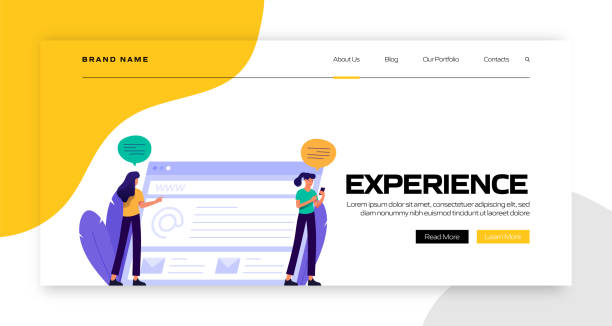
One of the main concerns for many businesses when considering custom website design is the issue of costs and investment.
Contrary to popular belief, custom website design is not necessarily more expensive than ready-made solutions in the long run, and in many cases, it offers a much higher return on investment (ROI).
The price of a custom website can vary depending on several factors such as project complexity, number of pages and features, UI/UX design, need for specific systems (e.g., custom content management system), need for integration with third-party software, and the level of support required.
Although the initial cost might seem higher than using ready-made templates, consider that you are investing in a unique digital asset designed entirely to fit your business strategies.
This means complete control over security, performance, and future development capabilities.
Hidden maintenance costs, functional limitations, and SEO issues in general websites can, in the long run, far exceed the initial investment for custom website design.
A custom site allows you to plan for your business growth with greater confidence, knowing that your digital infrastructure will be able to support that growth.
Therefore, instead of viewing it as an expense, consider it a strategic investment to remain competitive and outperform rivals in the digital space.
Does your current e-commerce website not generate the expected sales for you?
Rasavveb specializes in professional e-commerce website design!
✅ An attractive and user-friendly site aimed at increasing sales
✅ High speed and security for an ideal shopping experience⚡ Get a free consultation for online store design with Rasavveb!
Maintenance and Support After Launching a Custom Website
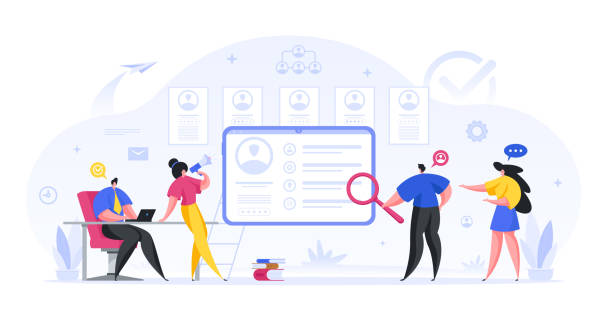
The successful launch of a custom website is just the beginning.
Ongoing maintenance and support after launch are crucial to ensure that your website constantly performs optimally, remains secure, and keeps pace with evolving market needs.
These services include regular security updates, site performance monitoring, data backups, bug fixing and troubleshooting, and adding new functionalities as needed.
Unlike ready-made templates which often have generic updates and support, with custom website design, you can benefit from support services tailored to your specific business needs.
This means a specialized team familiar with your website’s architecture is always ready to address issues and provide optimal solutions.
Also, over time, you may need to add new sections, improve user experience, or integrate with emerging technologies (such as AI or virtual reality).
A custom site, with an infrastructure designed from the outset for scalability and flexibility, allows you to implement these changes without the need for fundamental and costly overhauls.
Professional support after custom website design ensures that your investment is protected for the long term and your website remains a powerful tool for the growth and development of your business.
Future Trends in Custom Website Design and Digital Marketing
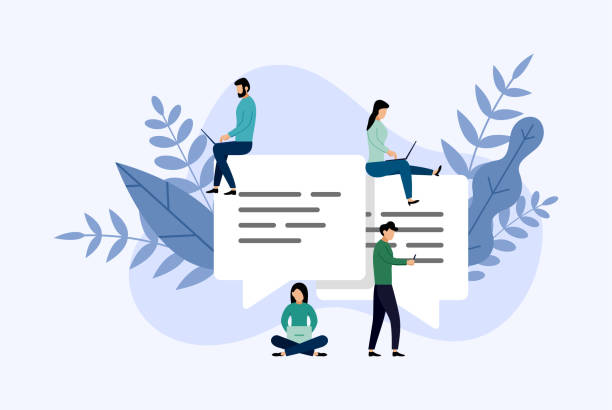
The world of custom website design and digital marketing is constantly evolving, and awareness of future trends can help businesses stay ahead of the competition.
One of the most important upcoming trends is the increasing importance of personalized user experience.
Custom sites have the ability to personalize content and products based on each user’s behavior and preferences, which leads to increased conversion rates and customer loyalty.
Another is the increasing integration of Artificial Intelligence (AI) and Machine Learning (ML) into websites; from intelligent chatbots to predictive analysis of user behavior.
These technologies can improve business processes and enrich user interaction.
Also, Progressive Web Apps (PWAs), which combine the best features of web and mobile applications, will gain increasing popularity due to their high speed and offline capabilities.
Custom website design empowers businesses to easily implement these new technologies into their structure and benefit from them.
Cybersecurity will also remain a priority, and custom sites with stronger architectures will have a competitive advantage.
The future of custom website design is moving towards smarter, more personalized, and more secure solutions that cover not only current but also future business needs and will create new opportunities in the digital marketing arena.
Frequently Asked Questions
| Question | Answer |
|---|---|
| What is custom website design? | Designing and developing a website that is built from scratch based on the specific needs, goals, and brand of a business or individual, without using ready-made templates or general platforms. |
| What are the main advantages of custom website design? | High flexibility in design and functionality, unlimited expandability, greater security, better SEO optimization, unique user experience, and full compatibility with brand visual identity. |
| Is custom website design more expensive than using ready-made templates? | Yes, it usually has a higher initial cost than using ready-made templates, as it involves more time and effort for needs analysis, unique UI/UX design, and custom coding. |
| Who needs custom website design the most? | Businesses with complex and unique functional needs, brands that want a strong and distinctive visual identity, startups that require scalable platforms, and companies that value high security. |
| What are the main stages of designing a custom website? | Includes needs analysis and gathering, planning and defining site structure, user experience (UX) and user interface (UI) design, coding and development (front-end and back-end), testing and debugging, and finally launch and maintenance. |
And other services of Rasavveb advertising agency in the field of advertising
Smart Data Analysis: A novel service for increasing website traffic through the use of real data.
Smart Content Strategy: A professional solution for campaign management with a focus on marketing automation.
Smart SEO: A creative platform for improving online growth with intelligent data analysis.
Smart Digital Advertising: A dedicated service for increasing sales based on the use of real data.
Smart Sales Automation: Designed for businesses seeking to analyze customer behavior through SEO-driven content strategy.
And over hundreds of other services in the field of internet advertising, advertising consultation, and organizational solutions
Internet Advertising | Advertising Strategy | Advertorials
Resources
Custom Website Design: A Comprehensive Guide
The Importance of Website Design for Startups
Key Tips for Choosing a Website Design Company
SEO Optimization for the Success of Modern Businesses
? In today’s competitive world, a strong online presence is your key to success. Rasavveb Afarin, by providing comprehensive digital marketing solutions including responsive website design, SEO, and social media management, will elevate your business. Build your digital future with us.
📍 Tehran, Mirdamad Street, next to Bank Markazi, Southern Kazeroun Alley, Ramin Alley, No. 6

